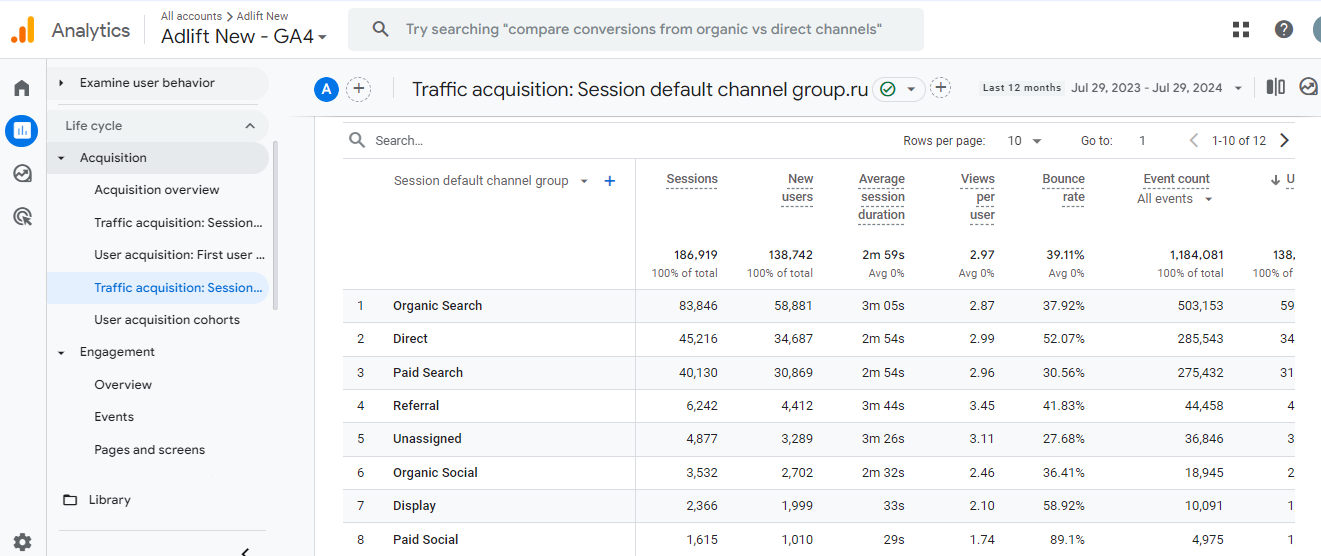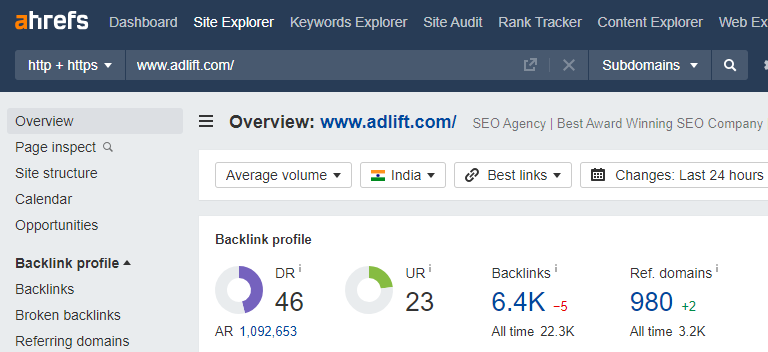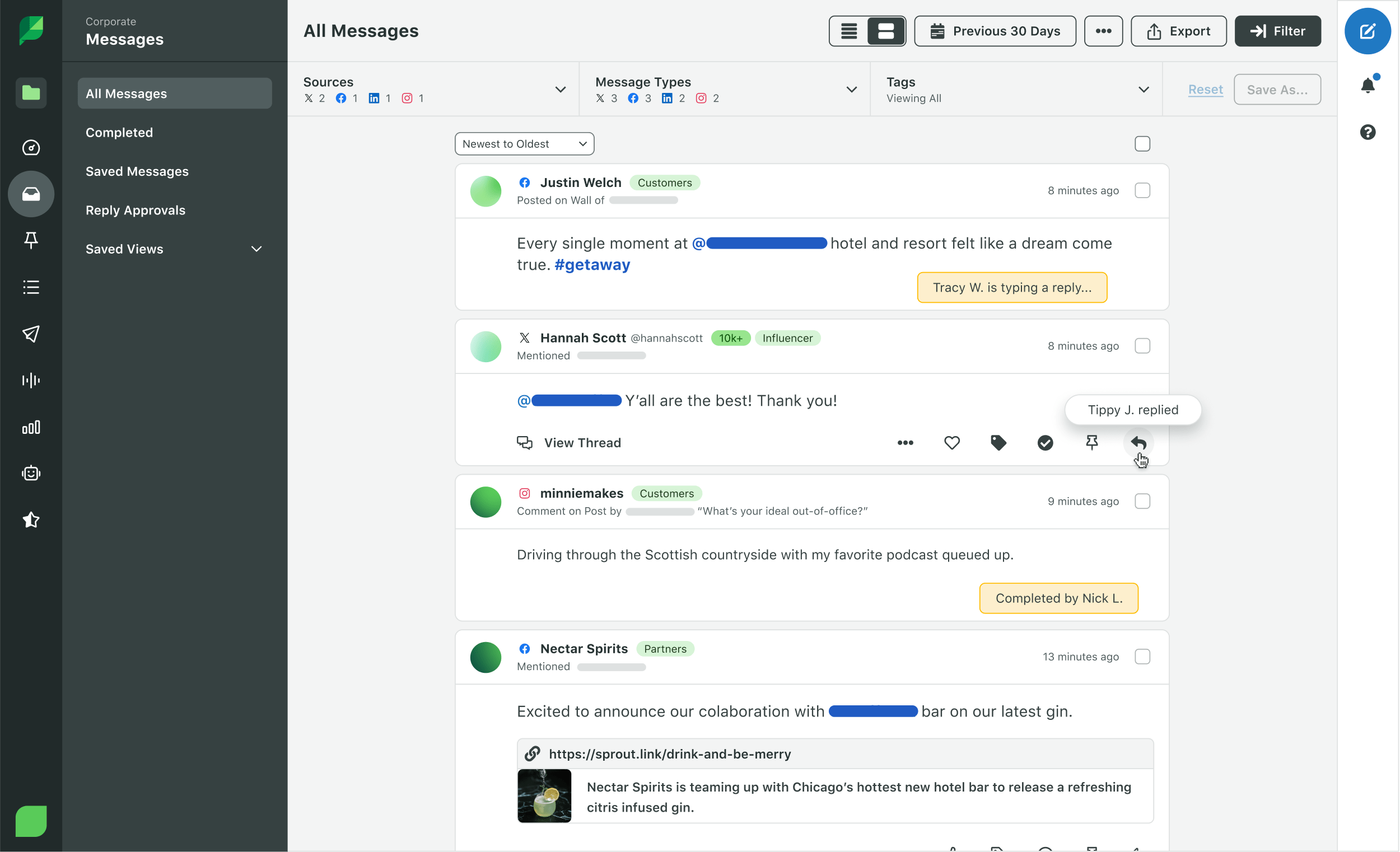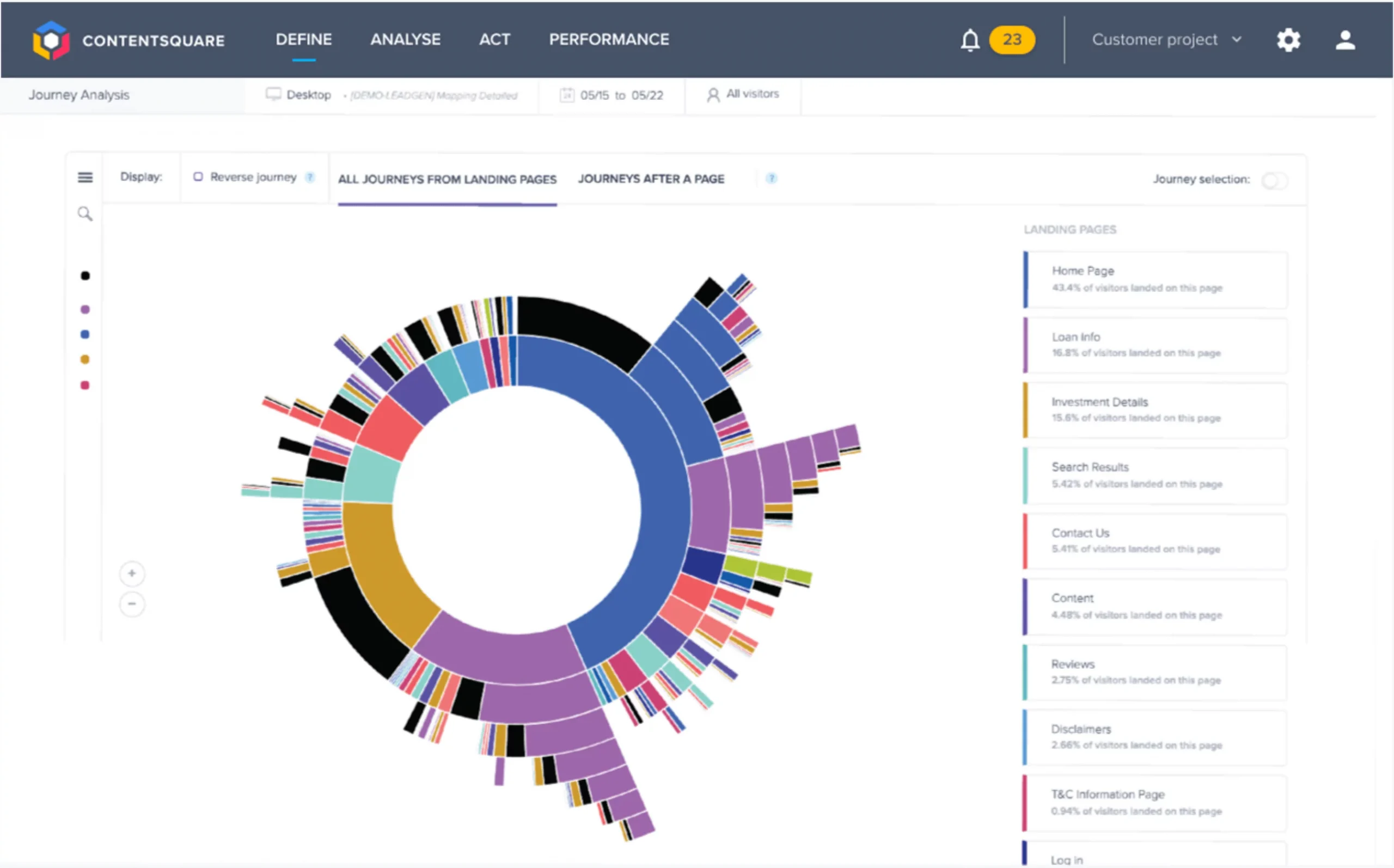From Creation to Conversion: How to Measure Content Performance for Growth

Creating content that dazzles is only half the battle – the real game is in measuring its success. Ever wondered why those “No Added Sugars,” “Farm-Fresh,” and “Doctor-Recommended” labels catch your eye? It’s all about trust. But, just like those labels, not all content delivers what it promises. To truly grow, you need to know what’s working and what’s not with the help of content marketing metrics.
Now that the audience’s attention spans are shorter than ever, how do brands keep people interested? It’s a challenge, but with the right strategies, it’s totally doable. Tools like Google Analytics are your best friends here. Check your page views, bounce rates, and time on the page. Are your readers sticking around or clicking away quickly?
Also, take a look at the content marketing metrics for engagement. How many likes, shares, and comments are your posts getting? Social media platforms are gold mines for this kind of data. You’re on the right track if a post gets shared a lot! Don’t overlook conversion rates and remember that feedback is gold. The audience’s insights can help shape your future content strategy.
By monitoring these aspects closely, you’ll turn your content from mere words into powerful growth tools. Let’s explore the importance of content marketing performance and how you should use it to measure your brand’s success.
Understanding Content Marketing Metrics
Comprehending content marketing metrics might sound geeky, but it’s your secret weapon for success! Think of it as your content’s report card, showing what’s acing and what needs a boost. Below, we have listed some of the most crucial content marketing metrics and the importance of measuring content marketing success.
Page Views:
This tells you how many individuals visit your web pages. The more, the merrier! A popular example is BuzzFeed, which attracts millions of page views daily with its catchy headlines and shareable content. More page views mean more eyes on your content, boosting brand awareness.
Unique Visitors:
Unlike page views, this content marketing metric counts individual visitors. Imagine a party with new guests every time! Nike’s marketing campaigns draw unique visitors by creating fresh, engaging content. High unique visitor numbers indicate growing interest and reach.
Bounce Rate:
This content marketing metric measures how many people leave your website after seeing just one page. A low bounce rate means people are sticking around, like guests who stay for the entire party. For instance, Amazon keeps its bounce rate low by recommending related products and encouraging visitors to explore more.
Average Session Duration:
This tracks how long visitors stay on your site. Longer sessions are like extended hangouts, showing deeper engagement. Netflix aces this, as users often binge-watch shows, spending hours on the platform. Longer durations mean your content is holding their interest.
Social Shares:
This content marketing metric counts how often your content is shared on social media. It’s like getting thumbs-ups from friends! More shares mean greater visibility and reach.
Conversion Rate:
It measures how many visitors take a desired action, like signing up or making a purchase. Think of it as guests deciding to join your fan club! Spotify’s free trials often convert to paid subscriptions, showing effective content marketing. High conversion rates indicate your content is driving action.
Lead Generation:
This content marketing metric tracks how many potential customers your content attracts. It’s like collecting new friends’ contact info! More leads mean more opportunities for business growth.
Customer Retention:
This measures how well you keep existing customers coming back. Loyal customers are like regular party guests who invariably return! Starbucks’ rewards program keeps customers loyal by offering perks. High retention rates mean your content fosters long-term relationships.
Why is Measuring Content Performance Essential?
There are several benefits a business would get by measuring content performance. Some of them are elaborated below:
Metrics Show how Content is Doing:
Think of content marketing metrics as your content’s cheerleader! They tell you if your blog posts, videos, and social media updates are hitting the mark or missing the target. For example, if your latest blog post has a ton of shares, it’s a sign your audience is loving it.
Uncover Audience Preferences:
Content marketing success metrics reveal what makes your audience tick. If your posts about behind-the-scenes content get lots of likes, you know people are into the ‘insider’ scoop.
Track Progress Toward Goals:
Content marketing metrics are your GPS for reaching marketing goals. If you aim to boost website traffic, content marketing metrics like page views and average session duration can show if you’re on the right path.
Optimize Content Strategy:
You can fine-tune your strategy by reviewing which content performs best through content marketing metrics. If a certain type of video is raking in views, you might want to create more of that content.
Allocate Resources Wisely:
Content marketing metrics help you decide where to spend your marketing budget. If one ad campaign brings in tons of leads while another flops, you’ll know where to invest.
Prove Your Marketing ROI:
Content marketing metrics provide solid proof of your marketing success. When you show how content marketing metrics like lead conversions and customer acquisition costs have improved, you can confidently demonstrate your campaign’s effectiveness.
Tools for Measuring Content Performance
Using the below-listed tools will let you measure and tweak your content for maximum impact, turning data into dazzling results:
Google Analytics
This powerhouse tracks your website’s traffic, user behavior, and conversions. Imagine having a backstage pass to see how visitors interact with your content and analyze the content marketing metrics.
Semrush:
This tool dives deep into SEO performance, tracking keyword rankings and backlinks. It’s like having a personal trainer for your content’s SEO health.
Ahrefs:
Perfect for analyzing backlinks and competitor strategies. It’s like peeking at your competitor’s playbook.
BuzzSumo:
This gem helps you find trending content and track social shares. It’s like having a crystal ball for viral content.
Hootsuite:
Manage and measure social media performance all in one place. It’s your social media command center!
Hotjar:
Provides heatmaps and session recordings to see where users click and how they navigate. It’s like watching your audience’s journey.
Sprout Social:
Tracks social media metrics and provides in-depth analytics. It’s like having a social media sidekick.
Contentsquare:
Offers insights into user behavior and content performance. It’s your content’s personal coach.
How to Measure Content Marketing Success
Some of the best practices for setting up measurement frameworks and interpreting data insights are as follows:
Define Clear Goals: Start with specific, measurable objectives. Knowing your end goal, whether it’s boosting traffic or increasing sales, guides your entire measurement process.
Choose Relevant Content Marketing KPIs: Select key content performance metrics indicators that align with your goals. For example, if your aim is higher engagement, track content marketing metrics like page views, time on site, and social shares.
Use the Right Tools: Leverage analytics tools like Google Analytics, Semrush, and Hootsuite to gather accurate data. These tools provide detailed insights to help you track performance effectively.
Set Benchmarks: Establish baseline content marketing metrics to compare your progress. This helps in understanding what’s working and what needs improvement.
Regularly Review Data: Make it a habit to analyze your content marketing metrics frequently. Regular reviews help you stay on top of trends and make timely adjustments.
Interpret Trends, not just Numbers: Look for patterns and trends over time rather than focusing on individual data points. This provides a clearer picture of your content’s performance.
Adjust Strategies Accordingly: Use insights to refine your content strategy. If a particular type of content performs well, consider creating more of it.
Report Insights: Share your findings with your team to ensure everyone is on the same page. This fosters a data-driven culture and helps in making informed decisions.
Some Successful Content Marketing Campaigns
You must have been aware of Coca-Cola’s famous “Share a Coke” campaign. In a bid to boost sales and create a personal connection with consumers, Coca-Cola replaced its iconic logo on bottles with the 250 most popular names in each country. This genius move led to a 2% increase in U.S. sales. Not only did this campaign make people feel special seeing their names on bottles, but it also sparked countless social media shares.
People couldn’t resist posting pictures of their personalized Coke bottles, creating a viral wave of user-generated content. #ShareaCoke had 89,000 uses on X and 496,000 uses on Instagram. There were 51 million impressions with an average engagement rate of 7.8% on X, formerly known as Twitter. On Instagram, there were 3.79 million impressions with an average ‘like’ rate of 8.7%, with the benchmark being 2–4%.
An ad from Coca-Cola’s ‘Share a Coke’ campaign in the U.K. in 2013. THE COCA-COLA CO.
This is one of the biggest examples of how creative content marketing can drive substantial results. Coca-Cola’s personal touch with names didn’t just boost sales and engagement; they also strengthened the emotional connection between the brand and its customers.
Another example of a successful content marketing campaign is our campaign for Schneider Electric, which delivered impressive SEO results across over 35 countries. We kicked things off with thorough keyword research and tackled various international SEO issues, including cannibalization and backlink problems.
Our strategy involved a detailed approach to both on-page and technical SEO, addressing everything from migration challenges to meta tags and internal linking. Moreover, our content marketing efforts zeroed in on Schneider Electric’s core verticals, boosting page visibility and domain authority. This approach led to a 13% increase in SEO traffic, a staggering 290% rise in target keywords ranking in the top 10, and a 31% jump in non-brand clicks.
Additionally, the global domain linking to SE.com grew by 34%, contributing to overall ranking improvements. We saw significant gains in countries like the UK, Egypt, Turkey, and Australia, underscoring the effectiveness of our international SEO strategy.
Common Obstacles in Measuring Content Effectiveness
Measuring content effectiveness can sometimes feel like trying to catch a fish with your hands—tricky and slippery! There are many challenges, such as changing algorithms, audience segmentation, and balancing qualitative feedback with quantitative content marketing metrics. One of the biggest challenges is attribution modeling, which is figuring out which piece of content deserves credit for a conversion.
Imagine you’ve got a blog post, a social media post, and an email campaign all working together to reel in a customer. Deciding which one gets the gold star is tough! Another hurdle is multi-channel integration. Your content is spread across so many platforms—social media, blogs, email—that keeping track of it all can be a real head-scratcher. Each channel has its own content success metrics and analytics, making it a challenge to get a clear, unified picture of what’s really working.
As per Indrani Pati, Head of Content Writing at AdLift, analyzing content performance metrics is challenging but not impossible. She says, “Measuring content effectiveness is a complex challenge as it’s tough to pin down clear goals and match them with the right metrics—especially when content has multiple purposes. Attributing content impact is tricky because customers interact with various touchpoints, and content often influences behavior subtly.”
She adds, “Relying solely on numbers overlooks qualitative aspects like emotional resonance and brand perception. Plus, the digital world is evolving as we speak, and data privacy regulations and siloed data systems make it harder to get a complete picture. Despite these obstacles, a balanced approach using both numbers and insights is crucial for making content better.”
Why Does Ethical Measurement of Content Matter?
Ethical measurement of content isn’t just good manners—it’s good business. It’s about treating your audience right and building a foundation of trust and transparency that is beneficial for everyone.
Respecting Data Privacy:
People value their privacy. When you collect data ethically, you show respect for your audience’s personal information.
Avoid sneaky tactics. Be upfront about what data you’re collecting and why. Transparency builds trust.
Transparency in Reporting:
Honest reporting keeps you credible. Fudging numbers might seem tempting, but it’s a short-term gain with long-term pain.
Clear and accurate content marketing metrics help everyone make better decisions, from your team to your customers.
Building Consumer Trust:
Trust is everything. When consumers trust that their data is safe and that you’re honest, they’re more likely to stick around.
Ethical measurement practices make your audience feel valued and respected, turning casual visitors into loyal fans.
Avoiding Legal Troubles:
Breaking data privacy laws can result in legal action. Ethically measuring content helps you stay on the right side of the law.
Staying compliant with regulations keeps your business safe and sound.
Enhancing User Experience:
Ethically gathered data leads to genuine insights. This means you can create better, more tailored content that your audience will love.
Happy users are more engaged users. When your audience feels respected, they’re more likely to interact with your content.
Boosting Brand Reputation:
An ethical approach to data builds a positive reputation. People talk, and when they do, you want them to say good things about your brand.
Your brand becomes synonymous with trust and integrity, setting you apart from competitors who might cut corners.
What is the Future of Content Measurement?
Content measurement is getting a turbo boost, and it’s all about becoming smarter and faster. AI and machine learning are taking the driver’s seat. They’ll analyze mountains of data at lightning speed, giving you insights that are not just accurate but also predictive. Imagine knowing which blog post will be a hit before you even write it! This means you can craft content that’s destined to succeed, making your strategy more effective and efficient.
Real-time analytics are set to become the norm, allowing you to tweak your strategies on the fly. Gone are the days of waiting weeks for a performance report. If something’s not working, you’ll know instantly and can pivot without missing a beat with the help of content marketing metrics. This instant feedback loop ensures that your content remains relevant and engaging, no matter the changing trends.
Also, forget one-size-fits-all content marketing metrics. The future is all about personalized content marketing metrics that are tailor-made for your unique goals. Whether you want to boost engagement or drive sales, you’ll have the exact data you need, personalized to your strategy. This means more targeted insights and better results for your specific objectives.
Moreover, with the rise of voice assistants and visual search tools, measuring how your content performs across these platforms will be crucial. Get ready to track how well your content answers voice queries and shows up in visual searches. This will open up new avenues for reaching your audience and understanding their interactions with your content.
From Good to Great: Optimizing Your Content Marketing Strategy
Taking your content marketing game to the next level means diving into the awesome world of constant tweaking and optimizing. Think of it like having a cool GPS for your marketing journey, helping you fine-tune and perfect your strategies for excellent results. By closely monitoring your content’s performance, you can pinpoint what’s working and what’s missing the mark, ensuring every effort makes a difference.
Data-driven insights are your secret weapon for sustainable growth. They’re like a backstage pass to understanding your audience, ensuring your content resonates and forges lasting bonds. Imagine knowing exactly what your customers crave – that’s the power of these insights. Instead of tossing content into the void, you’re crafting messages that genuinely connect. So, keep those content marketing metrics close and let the data propel you to new heights of success!
Categories
Recent Posts
- Boost Your Website’s Visibility with These Must-have B2B SEO Tools January 13, 2025
- Master Your Digital Strategy: Learn the 7 Types of SEO That Lead to High Rankings January 13, 2025
- 2024: A Year to Remember at AdLift! January 7, 2025
- How to integrate your SEO and paid search strategies to maximize efficiency and reduce CAC January 6, 2025
- SEO in 2025: Adapting to a Changing Search Landscape By Prashant Puri, CEO & Co-Founder, AdLift January 3, 2025
- Understanding the Google December 2024 Spam Update: What You Need to Know December 31, 2024
- Beware of Ongoing Scams Involving Fake AdLift Representatives December 31, 2024
- Facebook vs Twitter: Which Platform Wins for Your Marketing Goals? December 30, 2024
- The Art of Naming Conventions in Marketing Campaigns: Best Practices for Clarity and Success December 26, 2024
- Is Your Content Strategy Working for You — or Against You? December 19, 2024
Get
in Touch
Contact AdLift for a 360-degree marketing plan











